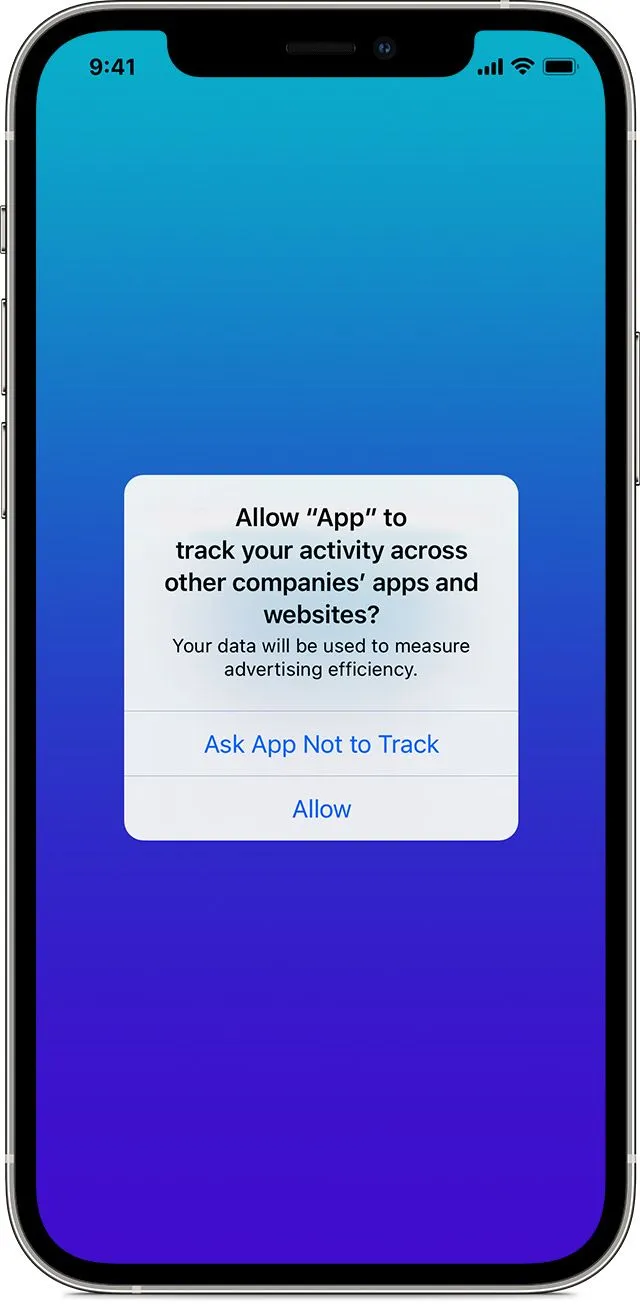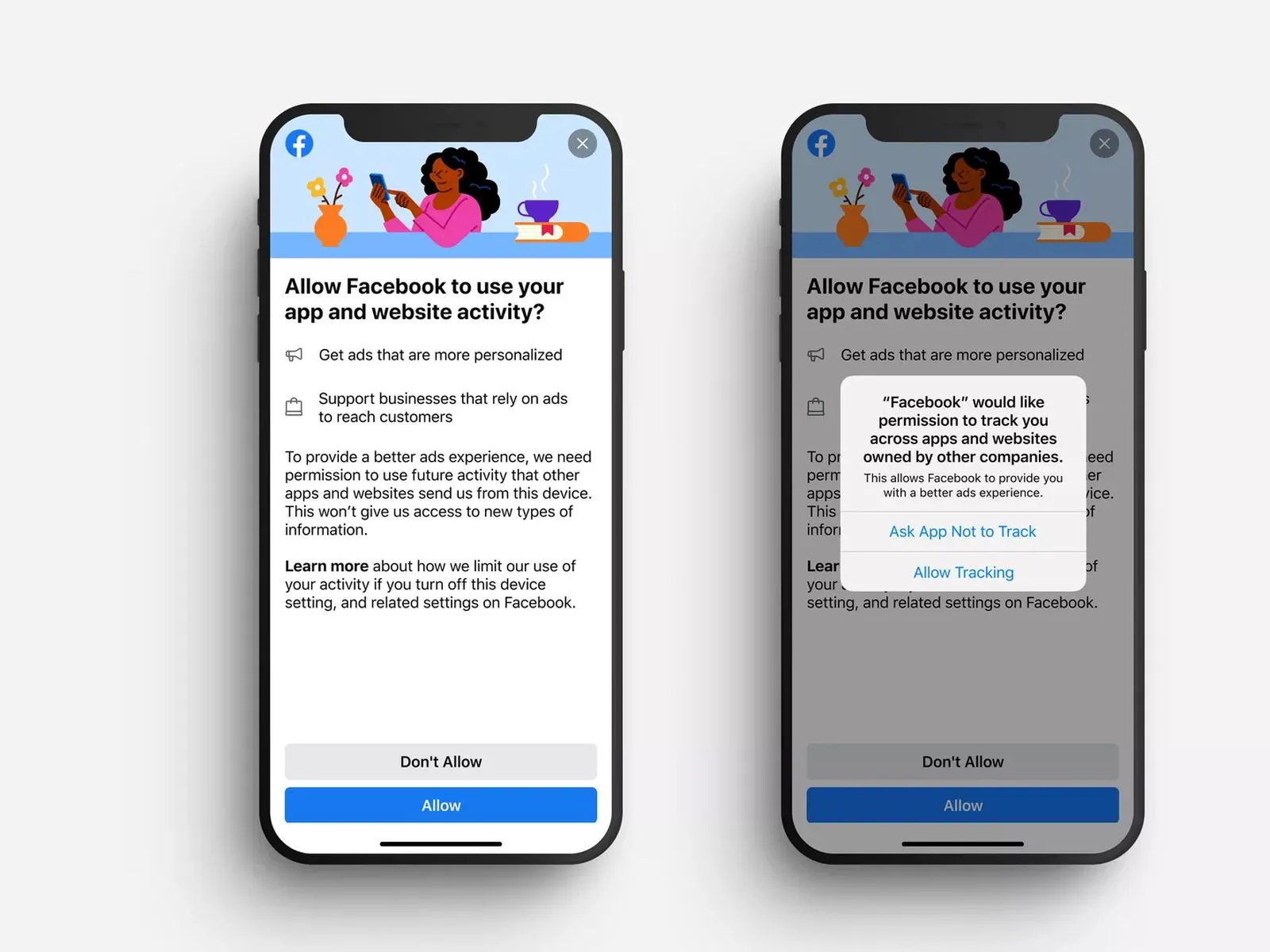Mobile attribution in iOS 14.5+


Share
Apple’s new privacy framework App Tracking Transparency finally went live in April 2021. The new framework changes how mobile attribution and tracking will be done on iOS versions 14.5+, with other platforms expected to follow suit in the future. The update significantly impacts how data is collected on iOS, as well as the types of data that trackers can collect and their accuracy of the data, thus restricting the amount of information available to mobile attribution platforms.
Mobile attribution at a glance
Mobile attribution is a marketing technique employed by organizations and developers to connect app installs and in-app user actions to a specific marketing channel or campaign. Establishing a clear connection between marketing and app data gives teams the ability to optimize their paid marketing funnels.
Attribution gives marketers insight into the user journey, from the moment the user lands on the app to their activity once there. The technique produces a data point for each relevant user action, whether it’s viewing the app’s Google or Facebook Ad or completing a purchase in-app following installation.
To learn more about mobile attribution, see our topical guide.
Mobile attribution on iOS devices
The main tracking tool on iOS mobile devices is a unique device identifier called the IDFA (“Identifier for Advertisers”) This identifier allows companies to target ads and gauge their effectiveness by tracking per-device actions.
An IDFA can also be used to pair with third-party tech such as Facebook’s tracking pixel to track user actions across the web and other apps. The unique identifier can also be shared with analytics platforms like Amplitude or Mixpanel to create mobile attribution funnels.
How App Tracking Transparency affects mobile attribution on iOS
Prior to Apple’s 2021 update, an IDFA was accessible to all apps by default. With Apple’s new App Tracking Transparency (“ATT”) framework, IDFAs are no longer accessible by default and each app is now required to explicitly request authorization to track user actions across other apps and websites.

If a user asks not to be tracked, the app developer cannot access the device advertising ID (IDFA). The app is still allowed to track the user’s activity, but without any attribution data, making it difficult to trace any marketing activities with specific actions users take in the app.
Developers are given only one chance to ask for permission to track a particular user, and the user-facing permissions dialog has limited customization options. Users can give or withdraw their permission for an app to track their advertising ID at any time, by making their selection in their system privacy settings.
Further, users can turn off the “Allow Apps to Request to Track” option in their system privacy settings, from which point on they’ll no longer see tracking prompts from all apps. Turning off tracking prompts at the system level by default remove IDFA tracking for all apps, without any further prompts.
In view of the above, and given the widespread popular belief that tracking does not yield any direct benefits to the user, research from mobile attribution platform AppsFlyer suggests that at least 60% of users (and up to 90%) will choose to opt-out from tracking.
An alternative tracking method
An alternative to attribution using IDFA is the SKAdNetwork solution provided by Apple. With SKAdNetwork, you can track your campaigns and pinpoint those which are best-performing. Crucially, the class does not disclose user-specific data in the process.
However, SKAdNetwork also restricts the app that’s acquiring users from sending multiple in-app events and data points. It provides a single 6-bit integer value from 0 to 63 called ConversionValue. The developers have to use this value to store all the information that can be relevant for marketing tracking purposes. Although these 6 bits are limiting, there are ways to use them to send enough data for optimization and LTV calculations, for example:
- Use some of the bits to encode the time elapsed post-install;
- Use the bits as a counter of the number of times the user opens the app after the install;
- Store events — up to six independent events in total;
- Calculate predicted values like LTV inside the app and use some or all of the bits to store the result.
Mobile attribution platforms can maximize the use of ConversionValue by adopting one or more of these models to encode different events and parameters into the available six bits.
How companies are adapting
At this time, the major attribution platforms have announced their plans to adapt to the new changes. They will combine available attribution methods, including user opt-in IDFA, probabilistic attribution, and SKAdNetwork with conversion value tools. For instance:
- Adjust have released their guide to the new changes and have announced their latest SDK updates.
- Kochava have put together a comprehensive resource center for everything you need to know about iOS 14.5 and how they’re handling the changes, including their SDK updates and a SKAdNetwork integration guide with the new settings.
- AppsFlyer is opting for a slightly different probabilistic attribution approach with Aggregated Attribution when IDFA is not available. See also their SKAdNetwork Solution for more info.
- Branch has also published a resource hub for all iOS 14.5 related matters.
On May 6, 2021, a few days after Apple’s App Tracking Transparency announcement, Google released a notice about the future of user data transparency And it is most likely that it will follow in Apple’s footsteps soon and implement some form of opt-in tracking into its system as previously seen with the introduction of its Ads Personalization one year after Apple introduced Limit Ad Tracking (LAT).

And Facebook faces many limitations and further complications with its ad systems. To address this, the company had to create a separate advertising portal for iOS 14.5+ campaigns. Those campaigns can’t be personalized to the same extent as the rest of Facebook ad campaigns. The reporting available on iOS 14.5+ campaigns is also limited, according to Facebook’s help article. The specific limitations are as follows:
- Each app is now limited to 9 iOS 14.5+ campaigns at once, and eight conversion events per domain.
- The campaign results will be aggregated at the campaign level rather than at the ad level.
- Real-time reporting will no longer be supported. The data on campaign performance may be delayed up to three days.
- The campaigns can no longer be turned on or off in real time.
See this Facebook guide for a full overview of how ATT will affect its ads and reporting system.
The main implication of Facebook’s change for advertisers on iOS is less flexibility around testing and optimizing ad campaigns, and less confidence with each test due to probabilistic attribution.
How will your data be affected?
Now that we’ve walked you through the tracking updates in iOS 14.5 and what they mean, let’s talk about how you can mitigate the impact of these changes on your product.
Ensure that your mobile attribution platform supports App Tracking Transparency
The major mobile attribution platforms have already implemented support for ATT in their SDKs. iOS developers will need to make sure that their MAP has made the required changes, and that the version of the SDK used in their product is recent.
Understand if your ETL pipelines support non-real-time attribution data
The ATT-compliant implementation of app tracking events means that attribution data can now be delayed by multiple days, as apps can no longer send events as frequently. While previously you could expect to have real-time attribution data, you now have data arriving with potentially up to three days of delay. If you’re loading the data into your data warehouse for analysis, consider how delayed data will update existing data tables.
Adapt your ETL pipelines to use new attribution reports
The mobile attribution providers have released updates to their reporting tools to reflect the information that’s now available with ATT and to remove the information that’s no longer available. You might need to adapt your existing ETL pipelines to take advantage of these new report formats.
Need help with mobile attribution in iOS 14.5+?
If you’re looking to adapt your mobile attribution funnel to the changes in iOS 14.5, Mighty Digital is here to help.
Our team is well-versed in building data warehouses and implementing mobile attribution in apps, allowing us to address complex mobile attribution scenarios with sophisticated, growth-focused solutions.










